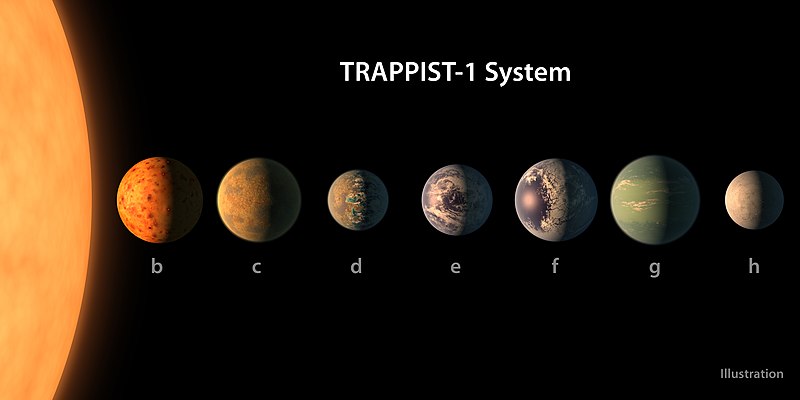Tập tin:PIA21422 - TRAPPIST-1 Planet Lineup, Figure 1.jpg

Kích thước hình xem trước: 800×400 điểm ảnh. Độ phân giải khác: 320×160 điểm ảnh | 640×320 điểm ảnh | 1.024×512 điểm ảnh | 1.280×640 điểm ảnh | 2.560×1.280 điểm ảnh | 6.000×3.000 điểm ảnh.
Tập tin gốc (6.000×3.000 điểm ảnh, kích thước tập tin: 2,63 MB, kiểu MIME: image/jpeg)
Lịch sử tập tin
Nhấn vào ngày/giờ để xem nội dung tập tin tại thời điểm đó.
| Ngày/giờ | Hình xem trước | Kích cỡ | Thành viên | Miêu tả | |
|---|---|---|---|---|---|
| hiện tại | 18:39, ngày 22 tháng 2 năm 2017 |  | 6.000×3.000 (2,63 MB) | PhilipTerryGraham | User created page with UploadWizard |
Trang sử dụng tập tin
Có 1 trang tại Wikipedia tiếng Việt có liên kết đến tập tin (không hiển thị trang ở các dự án khác):
Sử dụng tập tin toàn cục
Những wiki sau đang sử dụng tập tin này:
- Trang sử dụng tại af.wikipedia.org
- Trang sử dụng tại ar.wikipedia.org
- Trang sử dụng tại bn.wikipedia.org
- Trang sử dụng tại ca.wikipedia.org
- Trang sử dụng tại el.wikipedia.org
- Trang sử dụng tại en.wikipedia.org
- Trang sử dụng tại es.wikipedia.org
- Trang sử dụng tại et.wikipedia.org
- Trang sử dụng tại fi.wikipedia.org
- Trang sử dụng tại fi.wikibooks.org
- Trang sử dụng tại glk.wikipedia.org
- Trang sử dụng tại id.wikipedia.org
- Trang sử dụng tại ja.wikipedia.org
- Trang sử dụng tại ku.wikipedia.org
- Trang sử dụng tại lt.wikipedia.org
- Trang sử dụng tại ms.wikipedia.org
- Trang sử dụng tại my.wikipedia.org
- Trang sử dụng tại nl.wikipedia.org
- Trang sử dụng tại pnb.wikipedia.org
- Trang sử dụng tại pt.wikipedia.org
- Trang sử dụng tại ro.wikipedia.org
- Trang sử dụng tại tl.wikipedia.org
- Trang sử dụng tại tr.wikipedia.org
- Trang sử dụng tại uk.wikipedia.org
- Trang sử dụng tại ur.wikipedia.org




